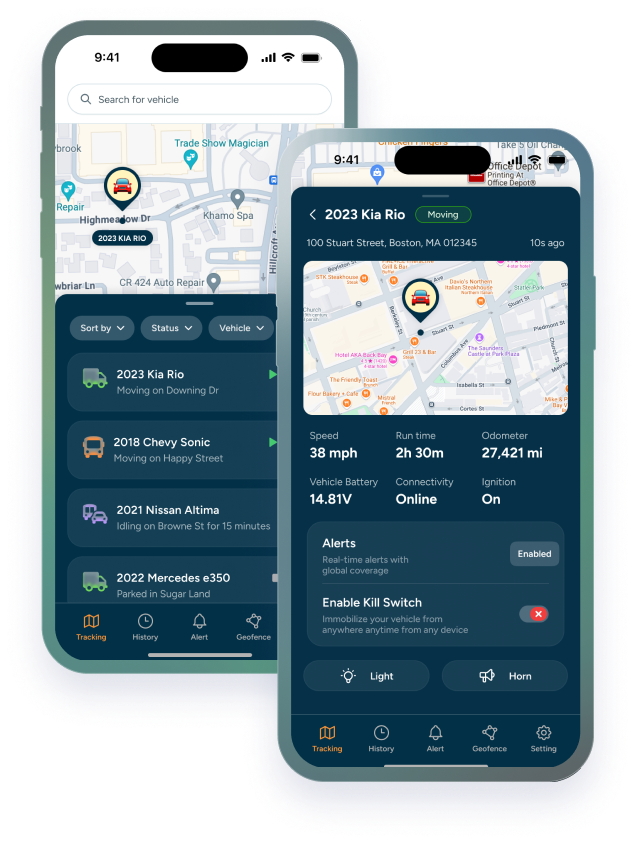Fleet technology is evolving rapidly. GPS trackers, AI dash cams, and smart dashboards are giving businesses unprecedented visibility. But behind every data point and every alert are the people who make fleets run, the drivers navigating long hours on the road, the dispatchers orchestrating dozens of moving vehicles, and the managers carrying the weight of responsibility for every mile.
The real measure of a fleet’s success isn’t just in the tools it uses, it’s in how those tools support and empower the humans behind them. Smarter fleets help people work more safely, confidently, and efficiently every day.

Taking the Weight Off Their Shoulders
Running a fleet is a juggling act. Drivers contend with unpredictable traffic, tight schedules, and the stress of constant check-ins. Dispatchers balance dozens of calls, trying to track vehicles, anticipate delays, and reroute when necessary. Managers constantly make decisions based on incomplete information, often firefighting instead of planning strategically.
Smart telematics changes that dynamic. By integrating real-time GPS tracking, engine diagnostics, and predictive maintenance data, fleets can reduce operational friction and give humans the room to focus on higher-value tasks.
How it works in practice:
-
Geofencing & automated alerts: Managers are notified instantly if a vehicle leaves a designated area or if an asset, such as a trailer or equipment, isn’t where it should be. No need to call the driver repeatedly.
-
Predictive maintenance by mileage, engine hours, and sensor data: Maintenance alerts trigger before breakdowns occur, giving mechanics time to schedule service without disrupting operations.
-
Route optimization & traffic intelligence: Drivers receive real-time instructions to avoid congestion, reducing fatigue while improving fuel efficiency.
Technology’s true value is measured not in the number of alerts it sends, but in the confidence and focus it gives to the people using it.
Protecting and Empowering Drivers
For drivers, the road is more than a series of stops, it’s a place of responsibility, pressure, and sometimes risk. AI-powered dash cams and predictive alerts aren’t about surveillance; they’re about protecting people. Incidents are recorded accurately, risky behaviors are flagged proactively, and drivers can operate with reassurance instead of stress.
GPS and Dashcam features that make a real difference:
-
AI monitoring: Detects harsh braking, rapid acceleration, distracted driving, or drowsiness in real time.
-
Incident verification: Automatically records events for accurate reporting, protecting drivers from false claims.
-
Behavior insights: Provides coaching opportunities, helping drivers improve safely rather than being penalized.
The result is a culture of trust: drivers feel supported rather than surveilled, and managers gain actionable insights without micromanaging.
Managers Leading With Confidence
Managers face thousands of operational decisions every day. Smart fleets allow them to shift from reactive problem-solving to strategic leadership.
Advanced telematics capabilities include:
-
Real-time vehicle status: Fuel levels, battery health, and engine diagnostics all visible in one dashboard.
-
Predictive analytics: Identify which vehicles or routes are likely to experience delays, maintenance issues, or operational inefficiencies.
-
Comprehensive reporting: Consolidate driver performance, route efficiency, and fuel consumption into actionable insights for planning and coaching.
These tools reduce stress, improve decision-making speed, and free managers to focus on long-term operational improvements instead of daily firefighting.
Designing Technology Around Humans
The best fleet technology is human-centered. TrackHawk prioritizes intuitive dashboards, meaningful alerts, and tools that complement human judgment rather than replace it.
-
For dispatchers: Clear visual dashboards that make fleet status instantly readable, reducing cognitive load.
-
For drivers: Safety features that prevent accidents and build trust without constant interruptions.
-
For managers: Predictive insights that allow proactive, rather than reactive, fleet management.
Technology amplifies human capabilities, turning fleets into smarter, safer, and more efficient operations.
Smart fleets aren’t just about faster routes or better data. They’re about empowering people to do their best work, day in and day out.
Empowered People, Smarter Fleets
A fleet’s strength comes from the people behind it. When technology respects, protects, and supports them, everyone wins: drivers feel safe, dispatchers feel capable, and managers feel confident. That’s what it means to operate smarter, not just faster.
Ready to empower your team and support your people on the road? Explore TrackHawk’s smart GPS solutions today.
